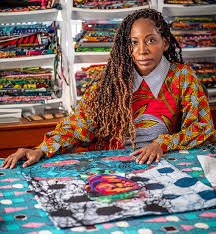BLM at School: Loving Engagement and Empathy, and Intergenerational Revolutionary Black Arts
/Hello Sacajawea Community,
Vesión en Español
National Library Week is April 23-29. One of the first places to start following our own interests, libraries can introduce us to stories, art, history and more. We are centering the contributions of Black writers and artists who embody the March and April guiding principles of Black Lives Matter at School: Loving Engagement, Empathy, and Intergenerational. We highlight three creatives—James Haskins, Jasmine Mans and Bisa Butler—whose work has focused on highlighting a facet the Black American experience that has been ignored by the broader culture. How are the themes and radical vision that they brought to their art reflected in your classrooms and communities?
James (Jim) Haskins
Growing up in the 1940s in Alabama during segregation, Jim Haskins wasn’t allowed to check out books from the public library. A determined reader, Jim read all the 200 books in his school library and a set of encyclopedias. As a college student, he joined the student civil rights protests. Later, when Jim began teaching in Harlem, he had a difficult time finding books that interested his Black students. Jim decided to write his own, culminating in over 100 books about Black Americans who shaped American culture. "I knew exactly what I wanted to write -- books about current events, black history and important black people so that students could understand the larger world around them.”
Jasmine Mans
An American poet and performance artist, Jasmine Mans published her first book of poetry, Chalk Outlines of Snow Angels, in 2012. Her recent book of poems, Black Girl, Call Home, explores the relationship between Black mothers and Black girls. “Tell me who my mother was before she was my mother,” writes Jasmine. Her book examines how Black girlhood intersects with culture, including homophobia and matrimony across generations. Jasmine uses language to rewrite the archetype of the strong Black woman by focusing on the nuances of the complex life lived by Black women, regardless of age.
Bisa Butler
Bisa Butler is a fabric artist who describes her quilts as a photo album of Black families living in the diaspora. Learning to sew from her mother and grandmother, she chooses a vibrant palette of fabrics for the quilts. Bisa’s first pieces depicted people that she saw in her grandmother’s photo albums. Later, she used photos of Black families she found in the National Archives. Often the only information with the photo was the location, resulting in the erasure of any individual identity. Bisa wanted the anonymous people in the photos.
What can you do to learn more?
Read John Lewis In The Lead or Champion! by James Haskins
If you have 3 minutes, listen to Jasmine Mans read from Black Girl, Call Home.
If you have 5 minutes, watch Bisa Butler talk about her art and creative process. Bisa Butler: Portraits | Exhibition Stories
Dig Deeper
Black Children’s Books and Authors website
Faith Ringgold reads Tar Beach (Younger kids)
Art exhibit at Wa Na Wari, a Black-led space for Black people, Black art, and Black stories located in Seattle’s Central District, through April 14th.
Volunteer with Us!
There are many ways to be involved with our Sacajawea Parent Equity Team. A few of the ways to join us are below. Please contact equity@sacpta.org.
Join a monthly virtual meeting. Meetings are the first Wednesday of the month, 7-8:00pm.
Volunteer to write one of our bimonthly newsletters. It's a great way to learn and share, and you won't have to do it alone.
Event volunteer
With gratitude,
Sacajawea’s Parent Racial Equity Team
equity@sacpta.org





